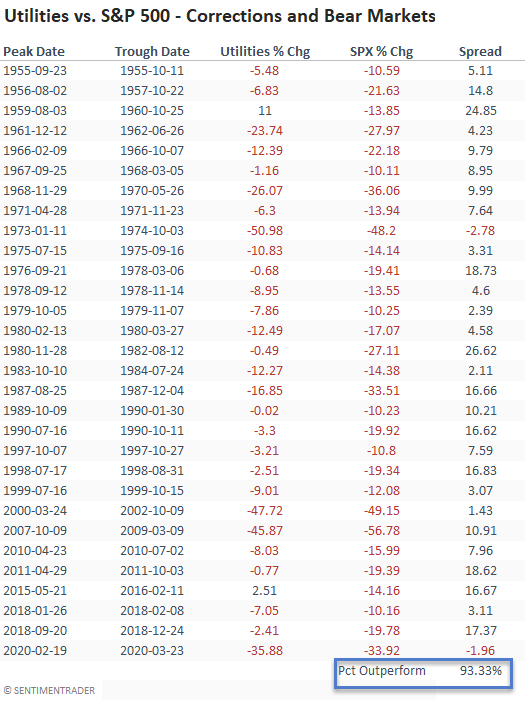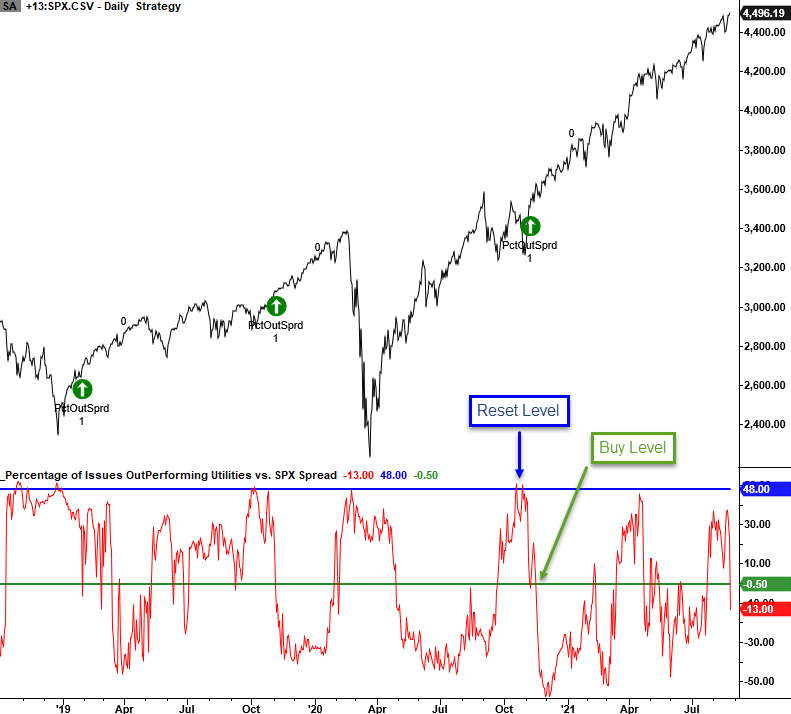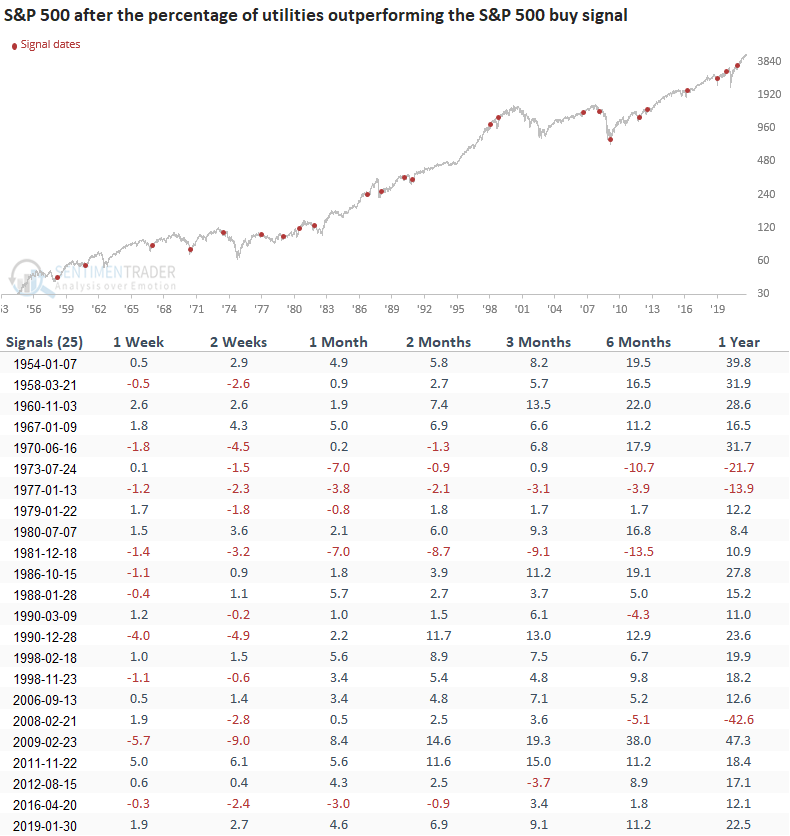Utilities as a risk-on indicator

During periods of market stress, utilities are one of the go-to sectors for investors as they seek a more defensive portfolio allocation to minimize drawdowns. Since 1955, utilities have outperformed the S&P 500 index during correction and bear market periods 93% of the time.
Conversely, during bull market phases, utilities typically underperform the broad market as investors seek to allocate to sectors with a more high octane offensive tilt.
Today's note aims to share a concept that identifies when utilities reverse from a period of outperformance to underperformance that is typically associated with a bearish to bullish transition in the market.

COMPONENTS
- Percentage of S&P 500 utility members outperforming the S&P 500 index on a rolling 21-day basis.
- Percentage of S&P 500 members outperforming the S&P 500 index on a rolling 21-day basis.
The trading signal is based on the following formula.
PERCENTAGE OUTPERFORMING SPREAD
Spread = Percentage Outperforming Utilities - Percentage Outperforming S&P 500.
THE CONCEPT
The utilities outperforming spread signal identifies when the percentage of members outperforming spread between utilities and the S&P 500 increases above a user-defined threshold and reverses lower to cross below a user-defined buy level. i.e., the broad market is transitioning from a risk-off phase to a risk-on phase. The model will issue an alert based upon the following conditions.
SIGNAL CRITERIA
- If the spread crosses above 48%, the reset condition is true.
- If condition 1 and the spread crosses below the buy level threshold of -0.50%, then buy.
CHART EXAMPLE

HOW THE SIGNAL PERFORMED
Results look excellent starting in the 1-month timeframe with several notable z-scores. Given that the signal is typically associated with a market transition from a period of stress, it's not a surprise to see somewhat lackluster results in the first two weeks.



